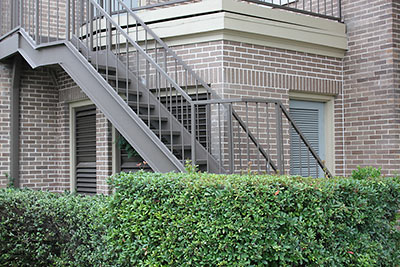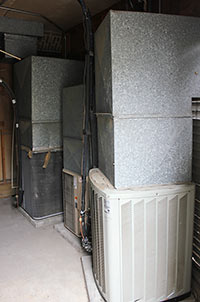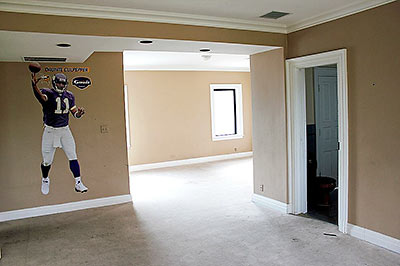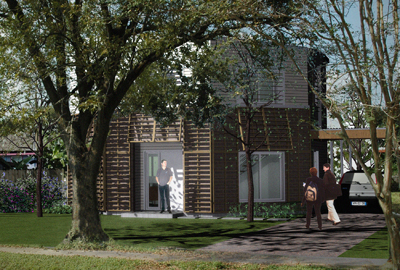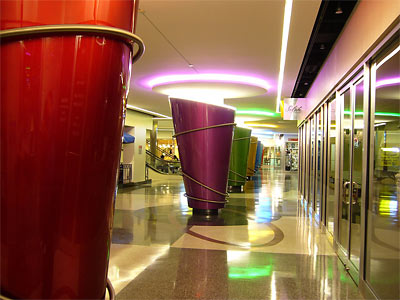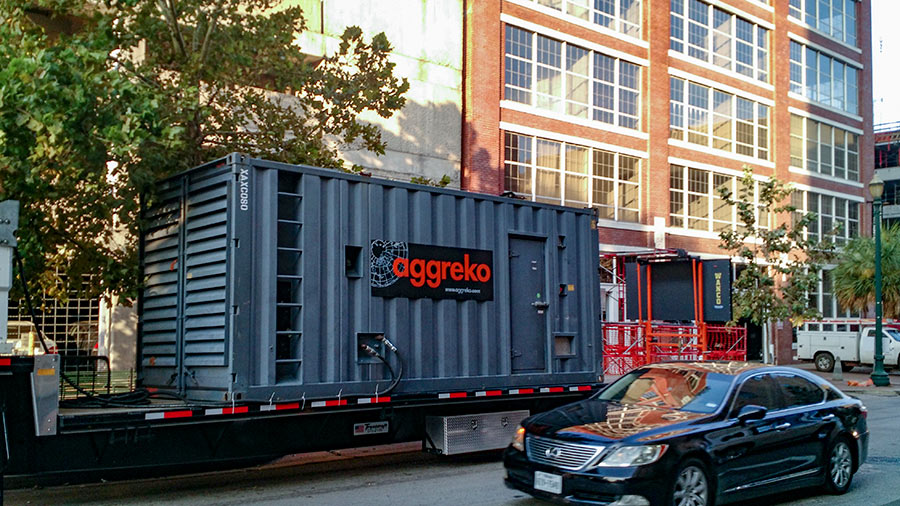
Residents of the 79 apartments in the Hogg Palace Lofts are expecting air conditioning in their units to be restored sometime today — for the first time since power went out early on the morning of August 27th. At a meeting earlier this week, attorneys for and representatives of the Randall Davis Company told tenants of the 8-story building at 401 Louisiana St. that they were aiming for Friday for the AC to be turned on, though could not guarantee it — but that work would continue over the weekend if it couldn’t.
A somewhat parallel sequence of events played out after the promised trailer-mounted Aggreko 1 MW generator pictured above was parked along Preston St. in front of the building last Friday; difficulties in connecting it to the electrical system — including a hunt for the unknown owner of a white BMW parked in a tenant spot in the parking garage that stood in the way of a hook-up — delayed the restoration of electrical power until Monday.


 “I have 3 words that explain why Chicago developed as a ‘modern city’ well before Houston: ‘winter’ and ‘air conditioning.’ Think about it . . . Heating a big tall building to make it comfortable is easy. In contrast, cooling that same building is not so easy — especially in the post Civil War and 1890-1920 time frame. Now, the development of commercially viable air conditioners in the 1920-30’s was an expensive luxury. Then the WW2 years and rationing, and voilá — [only] modest growth of ‘big city’ until the late 1940’s and 1950’s. So when did Houston really start to grow? Yup, you guessed it: post WW2 and the 1950’s, when most middle class people could afford air conditioning in their homes and businesses. So if you want cool ‘old’ pre-war buildings, go north and east towards cooler weather. But if you want a modern or post-modern or even contemporary building, just look at Houston, or Atlanta, or Los Angeles, or Las Vegas. (And thank
“I have 3 words that explain why Chicago developed as a ‘modern city’ well before Houston: ‘winter’ and ‘air conditioning.’ Think about it . . . Heating a big tall building to make it comfortable is easy. In contrast, cooling that same building is not so easy — especially in the post Civil War and 1890-1920 time frame. Now, the development of commercially viable air conditioners in the 1920-30’s was an expensive luxury. Then the WW2 years and rationing, and voilá — [only] modest growth of ‘big city’ until the late 1940’s and 1950’s. So when did Houston really start to grow? Yup, you guessed it: post WW2 and the 1950’s, when most middle class people could afford air conditioning in their homes and businesses. So if you want cool ‘old’ pre-war buildings, go north and east towards cooler weather. But if you want a modern or post-modern or even contemporary building, just look at Houston, or Atlanta, or Los Angeles, or Las Vegas. (And thank 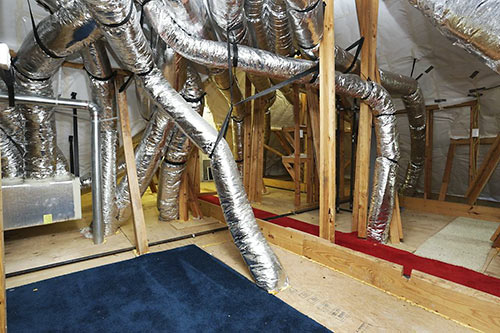
 “Had this same issue with our home in Midtown. The issue ended up being the air intake was not large enough where the filter was. Because of this, the blower would suck air from the drainage pipe in the pan for the hot water heater that was next to it. Removed the filter and reduced the stress of air coming through; the sewage smell went away.” [
“Had this same issue with our home in Midtown. The issue ended up being the air intake was not large enough where the filter was. Because of this, the blower would suck air from the drainage pipe in the pan for the hot water heater that was next to it. Removed the filter and reduced the stress of air coming through; the sewage smell went away.” [